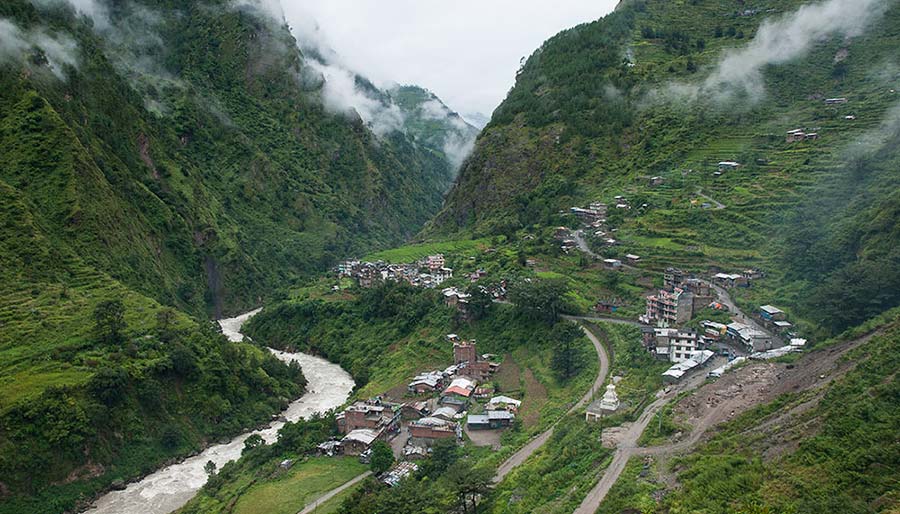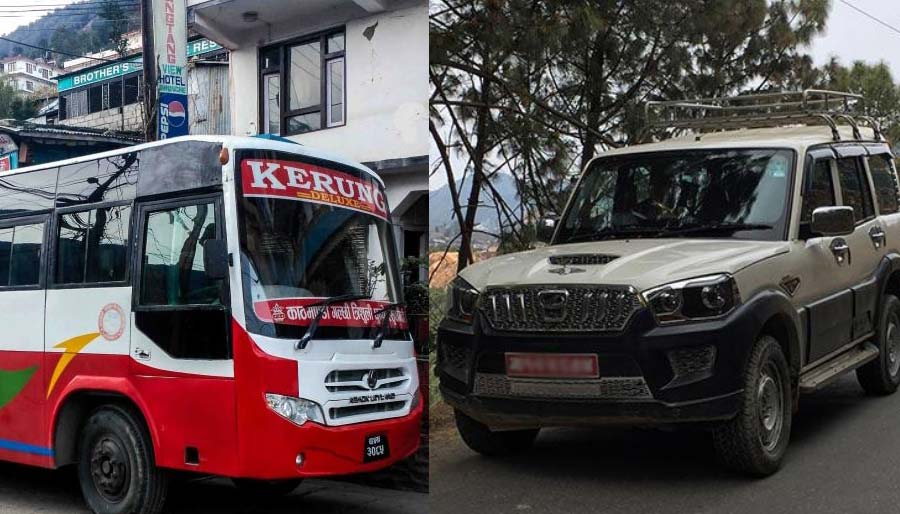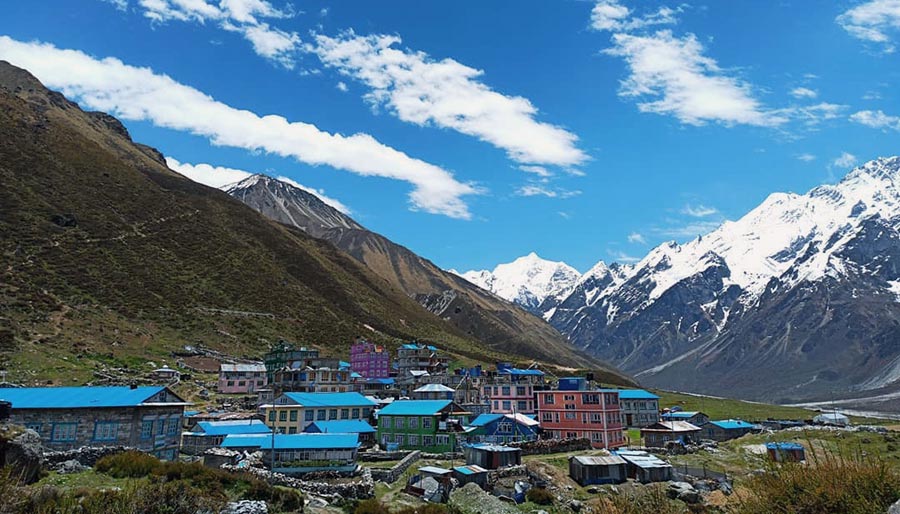Langtang Valley Trek Guide – the information you need
The Langtang Valley trek guide provides hikers with important information to assist them to plan their journey. We make every effort to give you information about the ideal seasons to embark on the Langtang trip, the necessary equipment, and other important guides. Langtang Valley, a well-known hiking location, is only 167 kilometers from Kathmandu. On the northern side, the valley is bordered by Tibet. Trekking in the Lantang valley is shorter and less expensive than other Nepal sites. The Syabrubensi is the starting point for the Langtang Valley hike. By the side of the Pasang Lhamu Highway, Syabrubensi is a local commercial center. The Langtang Valley draws fewer hikers than other traditional Nepalese trekking locations.
Langtang is a moderately difficult hike. A modest incline is included in the trek. The trek is a delightful stroll through the woodland beside the river. It is appropriate for both seasoned and inexperienced hikers as well as first-time travelers. Trekking across the Langtang Valley allows you to pass through picturesque Tamang villages. Visiting varied scenery, lush green forests, beautiful waterfalls, Tamang settlements, high Himalayan valleys, and monasteries will enhance your journey experience.
Langtang Valley Trek Facts
- Trekking Duration: 5-10 Days
- Final destination: Kyanjing Gumba
- Maximum Altitude: 5,000m at Tserko Ri (optional extension)
- Trekking grade: Moderate
- Accommodation: Teahouse Lodge
- Average Walking per day: 5-6 hours
- Best Season for the Lantang Valley trek: Autumn and Spring
- Group type: highly recommended to trek in a group
Lantang Valley hiking is often referred to as Glacier Valley trekking. Langtang Lirung, Ganesh Himal, Jugal Himal, Dorje Lakpa, and Ganja La Pass are among the glaciers and mountains seen from the adventurous mountain treks to Langtang valley.
The Lantang Valley is part of Langtang National Park, which is a protected area. Wild animals and birds may be found in abundance in the national park. You may see a variety of wild species on your trip, including red pandas, langurs, musk deer, snow leopards, and Himalayan Tahr. Aside from that, the national park is home to a variety of species, including Himalayan monals, white-winged redstarts, and snow Partridges.
Langtang is Nepal’s third most well-known and commercially established hiking destination. The Langtang region’s trails were nearly totally devastated by the terrible earthquake in 2015. A total of 375 individuals were killed in a single Langtang Village. Many settlements in the area were leveled and buried beneath the rubble. The region, on the other hand, has finished a huge renovation and restoration project for the region’s trekking paths and dwellings. Trekkers can now enter the region.
Major Highlights of the Langtang Valley
- Trekking location that is relatively short and easy to reach.
- Provides a wonderful Himalayan experience.
- Langtang Lirung, Ganesh Himal, Manaslu, and Jugal Himal’s appealing splendor
- At an elevation of 5033 meters, the hike to Tserko Ri’s vantage point is breathtaking.
- Explore the picturesque Tamang villages and learn more about their cultures and traditions.
- Rare creatures such as the red panda, snow leopard, langur, and musk deer can be seen.
- Explore Kyanjin Gompa, an old monastery.
Getting the trailhead

Every morning, a regular local bus departs from Kathmandu for Syabrubensi. There are two different ways to go to Syabrubensi from Betrawati. You may either take the Pasang Lhamu Highway through Dhunche or drive near the Trisuli River. The roadway that follows the Trishuli river is shorter and broader, however, it may be closed during the monsoon season to prevent landslide accidents. The Pasang Lhamu Highway is longer but more picturesque, passing through several Tamang villages. Beautiful towns along the path include Kalikasthan, Ramche, and Dhunche. It takes 6-9 hours to go to Syabrubensi, depending on the season and road conditions. You may book a private Jeep for comfortable excursions if you are a small party. A packaged trip to the Langtang Valley trek includes transfer services to and from the trailhead.
Food /Meals
The local hotel and restaurant association controls menu and meal prices, similar to other main trekking locations in Nepal. The meal selections are limited, yet they are sufficient to sample the various flavors. Bread, noodles, and, most typically, Dal Bhat are among the foods available. Dal Bhat is a popular dish among Nepalese guides and employees. Seasonal veggies, lentil soup, and pickles are included in the Dal Bhat package. It’s a more balanced and filling lunch for those who perform physically demanding occupations. Aside from it, the menu includes Tibetan Bread, Omelet, Potato Curry, Pasta, Pizza Noodles, dumplings (mo: mo:), and a variety of soups. Langtang dumplings are one-of-a-kind and come in a huge sizes. They are vegetable meals that have been deep-fried in cooking oil.
Aside from that, contemporary cheese manufacturers can be found at Kyanjin Village in Langtang Valley and Sing Gumpa in Chandanbari. The cheese factory is fully operational for 8-9 months of the year, producing excellent Yak Cheese. As a result, walking the Langtang valley, it is an excellent opportunity to sample the delectable Yak cheese. It’s worthwhile to take some back to Kathmandu.
Accommodation
The Mega Earthquake of 2015 wreaked on Langtang, making it the most popular hiking destination. The terrible earthquake claimed the lives of almost 375 individuals. The renovation took over two years to complete. The completely destroyed Langtang village was relocated to the former Langtang village’s eastern side. All of the lodges have now begun full-fledged operations. As a result, lodges are available for lodging along the Langtang region’s journey. The trip to the Langtang area is a lodge-to-lodge walk.
Applicable Permits
The two permissions required to hike in the Langtang region are the Langtang National Park Entry Permit and the TIMS. A National Park access permit is issued at the Dhunche checkpoint. The TIMS card is issued by the TAAN Secretariat and the Nepal Tourism Board’s TIMS counter in Bhrikutimanp. For TIMS, a group trekker must pay US$10 per person, whereas FIT hikers must pay US$20 for the same permit. The cost of a National Park Entry Permit is $30 USD. If you are going to trek the Tamang Heritage Trail trek, you require a special entry permit issued from the Department of Immigration. That costs US$USD 20 per person /week.
Things to carry
The Langtang Valley Trek guide tries to compile a piece of detailed information about the things to carry while going on the trek. There is a list of things to carry while going for the Langtang Valley trek. The list can be the same for other trails of the Langtang region. You can carry some energy bars and dry fruits as food supplements.
General Gear list
Upper Body
- Sunglasses with UV protection, Sun hat or scarf
- Light balaclava or warm fleece hat
- Lightweight gloves
- With a waterproof shell outer (Seasonal)
- T-shirts
- Light and expedition-weight thermal tops
- Fleece jacket or pullover
- Fleece Wind-Stopper jacket (Optional)
- Waterproof (preferably breathable fabric) shell jacket
Lower Body
- Under Garments
- Hiking shorts
- Lightweight cotton long pants
- Fleece or wool pants (seasonal)
- Waterproof (preferably breathable fabric) shell pants
Feet
- Thin, lightweight inner socks
- Thick, warm wool hiking socks
- Hiking boots with spare laces
- Sandles
- Gaiters for hiking in winter
Equipment Checklist for ACCESSORIES
- Sleeping bag rated to zero degrees F *
- Headlamp (e.g. Petzl Zoom) with spare bulbs and batteries
- Trekking Bags/Duffel bags
- Basic First Aid Kit
- Large plastic bags – for keeping items dry inside trek bag
- Day pack (Approximately 20-22 Liter)
- Trekking Poles
- Water bottles
- Ear Plug (to save your ear from snoring roommates)
Toiletries
- Toiletries (Small wash towel, Toilet paper, etc)
- Toothbrush/paste, multipurpose soap
- Nail cutter, Small mirror
- Personal Hygiene (Wet wipes, Tissue/toilet roll, Antibacterial hand wash)
Extra items
- Camera, Binoculars
- Trail Map/Guidebook
- Notebook & Pen
Best Season to Trek Langtang
Trekking in Langtang valley is possible throughout the year. However, autumn and spring are the best seasons for the Langtang region trek. Because during that time, it offers clear views of the mountains and lush forests.
Autumn: The autumn skies are crystal clear, and the rain stops by the beginning of September. It is greener and the temperature is perfect for hiking during autumn.
Spring: The temperature is warmer but the sky may look foggy in the lower part. However, the mountain view in the upper valley is awesome.
Winter: The temperature may fall less than zero. The weather is even hard if there is snowfall in higher altitudes. The thick snow covering the trails can make it difficult to walk.
Summer: Summer is relatively hot that begins in Nepal in mid-June. The frequent rain during the monsoon highly affects the trek in the hilly part of Nepal. Fooding and landslides disrupt the highway and even the trail section. So, very few people choose to go for the monsoon trek in the Langtang region.
Average temperature and weather conditions of Langtang Valley
| Location Elevation (meters) | Average Minimum Temperature (°C) | Average Maximum Temperature (°C) | Annual Rainfall (mm) |
| Kathmandu 1,400 | 10.1 | 23.6 | 1505 |
| Syabru Besi 1,550 | 10.6 | 22.7 | 1857 |
| Lama Hotel 2,380 | 3.9 | 15.5 | 1233 |
| Kyanjin Gompa 3,870 | -3 | 10.2 | 55 |
Popular trails of Langtang Region
Langtang National Park preserves a wide terrain of the upper hilly and mountain regions of Nepal. It borders Tibet on the northern side. Basically, Langtang regions are an accumulation of wilderness and several Tamang settlements. Langtang national park preserves not only wild animals and valuable flora but also a rich Tamang Culture. There are several trails leading to various destinations in the Langtang region. You may check the links below to see detailed information about those trials.
- Langtang Valley Trek – 10 Days
- Langtang Gosaikunda Trek – 16 DaysUSD
- Gosaikunda Laurebina Pass Trek – 9 Days
- Gosaikunda Lake Trek – 8 Days
- Tamang Heritage Trail Trek – 9 days
- Helambu Trek – 9 Days
- Ganesh Himal Trekking – 13 Days
- Gosaikunda Ama Yangri Trek – 14 Days
- Langtang Helicopter Tour – 2.5 hrs
Langtang Valley Trek Guide – Itinerary Options
6 Nights & 7 Days Itinerary
1st Day: Drive from Kathmandu to Drive to Syabrubesi(Lunch)
2nd Day: Drive to Syabrubesi by jeep
3rd Day: Trek from Syabrubesi – Lama Hotel (2455m)
4th Day: Trek from Lama Hotel – Langtang Village(3430m)
5th Day: Trek from Langtang village to Kyanjin Gompa and Hike to Kyanjin Ri (4773m)
6th Day: Hiking back to Rimche
7th Day: Trek back to Syabrubesi – Drive to Kathmandu
Langtang Valley Trek – Detail Itinerary
1st Day: Arrival in Kathmandu
2nd Day: Drive from Kathmandu to Syabrubeshi
3rd Day: Trek from Syabrubeshi to Lama Hotel
4th Day: Trek from Lama Hotel to Langtang Village
5th Day: Trek from Langtang Valley to Kyanjin Gompa
6th Day: Explore around Kyanjin Gompa and climb to Tsego Ri
7th Day: Trek Kyanjin Gompa to Ghoda Tabala
8th Day: Trek back from Ghoda Tabela to Syabrubeshi
9th Day: Drive Syabrubeshi to Kathmandu
10th Day: Transfer to the airport for your onward journey
Frequently Asked Questions
What does Langtang specifically mean?
Langtang is derived from the Tibetan language, where the words ‘Lang’ Yak and ‘Teng’ signify – to follow. Wild Yak may still be seen in the upper valley of the Langtang area if you travel to it. Langtang is a long, narrow glacier valley that extends out to the Kyanjin Gumba to the east.
What are the factors that make the Langtang valley trek difficult?
In comparison to other Nepalese treks, the Langtang Valley walk is not the most difficult. After Everest and Annapurna, this is Nepal’s third most popular trekking destination. The Langtang valley walk is an experience due to a number of variables. These characteristics, however, are also typical in other hiking destinations. The main things to consider are altitude sickness, isolation, and steep trekking terrain.
Can I get a hot shower and charge my electronic devices?
Warm showers and charging stations for electrical devices are offered in the Langtang region for hiking, but they must be paid for. It’s due to the remoteness and lack of amenities in that area. You can avoid such things if you do not feel comfortable using those services. Oriental Journeys suggests that our ardent travelers bring baby wipes and portable power banks to keep their hygiene and cleanliness when hiking in the Langtang region, as well as to charge their electronic gadgets.
What level of physical fitness do I need for Langtang Valley Trek?
One of the main worries for our previous passengers who wanted to hike in the Langtang region was their degree of physical condition. Because this is a moderate form of trekking, you don’t need to be in great shape. The rise of the Langtang Valley walk is gentle. As a result, a basic degree of fitness is sufficient. You should be able to walk for 6 to 7 hours every day if you have the stamina.
Final Thoughts
In comparison to other Nepalese trekking sites, the Langtang Valley Trek is a simpler and less expensive walk. Beginners will have little trouble completing the Langtang valley walk. The Gosainkunda Lake journey and crossing of the Laurebina pass, on the other hand, are more difficult due to the greater height and the steeper verticle ascent. Hiking training, staying physically fit, and packing essential gear assure a safe and successful journey. Before going on a hike, always check the weather forecast. Follow your instruction and ask any questions you have to the operator. During your journey to the Langtang area, you will have an unforgettable experience. I wish you the best of luck.


